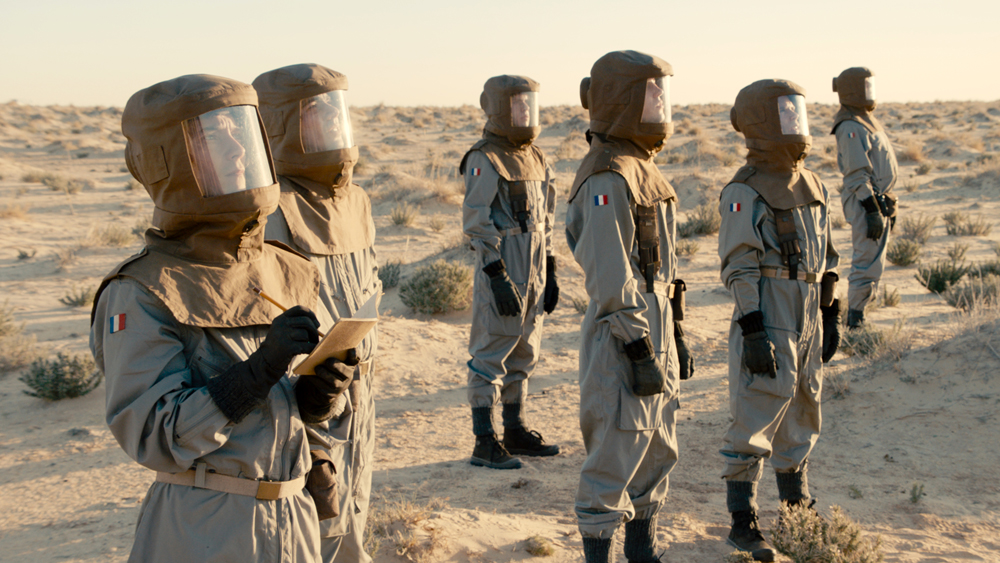Loic Barche on Short ‘The Atomic Adventure,’ Upcoming Feature Debut ‘Feu de Paille’
By Emilio Mayorga
LOS ANGELES (Variety.com) – “The Atomic Adventure,” a contender in ’s online MyFrenchFilmFestival, is the third short from Loïc Barché (“Goliath,” “Le Commencement”). Variety talked to the director about the short, and his feature debut “Feu de Paille.”
“The Atomic Adventure,” produced by young French outfits Punchline Cinéma and Leonis Productions, is set in 1961 in Algeria, where France has just detonated an atomic bomb, and a group of soldiers is sent to the zero zone to measure the radioactivity.
With touches of humor, documentary moments and an occasionally festive soundtrack that underscores the thoughtlessness of the atomic mission, “The Atomic Adventure” has a tragic, near surreal ending, offering a reflection about how progress evolves.
The story is inspired by true events. France carried out around 30 nuclear tests in the 1960s, mainly in the former French colonies of Algeria and Mururoa, an atoll in the French Polynesia. The tests ended in 1996.
Barché is working on his feature debut, a follow-up to “The Atomic Adventure,” which was selected for the Élisabeth Depardieu-founded Émergence Résidence and will be produced by Punchline Cinéma.
What was the inspiration for “The Atomic Adventure”?
A mission that took place on April 25, 1961, just after the explosion of the fourth French atomic bomb, in which soldiers were sent to ground zero to retrieve samples and assess the danger of radiation. This episode seems to me to be indicative of a shift in our history where “progress” began to mean “economic growth” and not at all “happiness” or “improvement of living conditions.”
To what extent does the plot focus on real events?
The idea of the film was to draw inspiration from this mission, but not to simply illustrate it. I have taken many liberties in order to link these events with contemporary events. In fact, it was the very choices that made an explosion in economic growth possible during the Glorious Thirty [1945-1975 period of large French growth] that have led to the current-day situation of the climate.
The tone and situations are not exactly naturalistic…
The film deliberately maintains a critical distance with the characters, who are like insects in the desert into which they sink and get lost. The title of the film itself is ironic. The film oscillates between the very light and highly dramatic moments. I wanted to show, at the same time, the faith in progress of the time and the disenchantment of today.
What references did you handle in making “The Atomic Adventure”?
While writing, I often thought about Luchino Visconti’s “The Leopard,” with regard to the idea that what is presented as a “new world” truly hides quite conservative realities. Jonas Mekas’ films guided us in the 16mm sequences. We wanted to mark a distance with the characters by favoring wide shots and avoiding at all costs the language of the so-called “realistic” mise-en-scène. While editing, I wanted, as in the films of Jean-François Stévenin, to makes the cuts very visible. By using the cut in the jump-cut you can represent a character’s thought process.
Could you give us some details about your feature debut?
I’m currently writing it. The working title is “Feu de Paille” (Flash Fire). The action take place in a village where a nuclear waste landfill project is being built. César winning Swann Arlaud (Hubert Charuel’s “Bloody Milk”) and Karim Leklou (Romain Gavras’ “The World Is Yours”) will play the main characters. Talking about nuclear energy makes it possible for me to question the future of humanity, and its development model on a fairly long-term scale (the landfill project affects the next 5,000 generations). I believe that cinema can help us project ourselves into the future, giving us the means to think about it serenely, with a free mind, rather than fearing immediate disaster.

